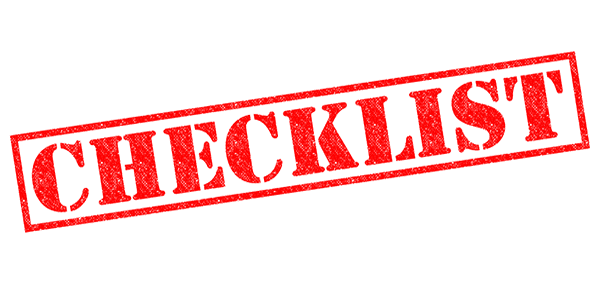
Moving to a new home can be an exciting yet overwhelming experience. So it’s wise to use a comprehensive moving checklist if you want to ensure a smooth and organized move. Class A Management provides a step-by-step guide to help tenants streamline the move process–from preparing for a move and finding a new home to settling into their new residence. By following this moving checklist, tenants can alleviate stress and stay organized throughout the entire journey.
Tip 1: Plan Ahead and Set a Timeline
Start your moving preparations early by creating a timeline that outlines important tasks and deadlines. This includes notifying your current landlord of your intent to move, researching and securing a new residence, scheduling moving services, and arranging transportation. By setting a timeline, you stay on track and avoid last-minute stress.
Tip 2: Declutter and Organize
Moving presents an excellent opportunity to declutter. Sort through your items and decide what to keep, donate, and sell. Organize your possessions into categories to make packing and unpacking more manageable. Remember: The less you have to move, the smoother the process will be.
Tip 3: Notify Important Parties
Ensure a seamless transition by notifying important parties of your upcoming move. This includes updating your address with your employer, the post office, utility companies, banks, insurance providers, and subscription services.
Tip4: Arrange Professional Movers or Rental Vehicles
Decide whether you want to hire professional movers or opt for a DIY move using rental vehicles. Research reputable moving companies or rental services in advance to make sure you book the best option for your needs. Reserve your movers or rental vehicles well in advance to ensure availability on your preferred moving day.
Tip 5: Gather Packing Supplies
Acquire an ample supply of packing materials such as sturdy boxes, packing tape, bubble wrap, and packing peanuts. Label each box with its contents and the room it belongs to, making unpacking at your new residence easier. Grouping items that live in one place will help with unpacking. For example: Put all contents from desk drawers in one box. Don’t forget to get essential tools like box cutters and markers for labeling.
Tip 6: Pack Room by Room
To maintain organization, pack one room at a time. Start with the least essential items and gradually move toward the more frequently used items. Clearly label each box with its contents to facilitate efficient unpacking. Pack fragile items with care, using appropriate padding and protection.
Pro tip: packing move-in day essentials in one box can help you when you reach your new residence. This can include: toiletries, bedding, one pair of clothing, and anything else you may need to keep you from having to dig through various boxes on your first night.
Tip 7: Arrange for Utilities and Services at Your New Residence
Contact utility companies at your new residence to arrange for services like electricity, gas, water, internet, and cable. Ensure these services are activated before your move-in date to avoid any lag in service.
Tip 8: Update Rental Insurance and Change of Address
Update your rental insurance policy to cover your new residence. Also, notify your insurance provider of your change of address to ensure uninterrupted coverage. This step helps protect your belongings and provides peace of mind during the move.
Tip 9: Conduct a Final Walkthrough
Before leaving your current residence, conduct a final walkthrough to ensure you haven’t overlooked anything. Check all rooms, closets, cabinets, and storage spaces to make sure nothing is left behind. Make sure to leave yourself cleaning products to do one final ‘clean sweep’ before leaving. This will help create a smooth transition and preserve your positive relationship with your former landlord.
Tip 10: Settle into Your New Home
Once you’ve arrived at your new residence, take the time to unpack, arrange furniture, and settle in. Prioritize essential items and gradually unpack the rest at your own pace. Make your new house feel like a home by personalizing the space and exploring your new neighborhood.
Moving doesn’t have to be a stressful experience. By following this comprehensive moving checklist, you can approach your move with confidence and efficiency. Planning ahead, de-cluttering, notifying important parties, and conducting a final walkthrough will help you enjoy a seamless transition to your new residence. Good luck with your move!
Looking for the perfect property? We’d love you to consider a property we manage. Check out the full list here or call us at 817-295-5959 to learn more.

